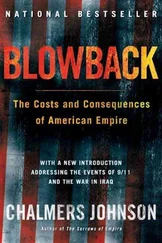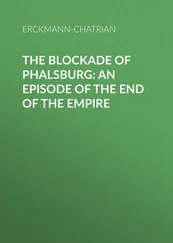Chalmers Johnson - The Sorrows of Empire - Militarism, Secrecy, and the End of the Republic
Здесь есть возможность читать онлайн «Chalmers Johnson - The Sorrows of Empire - Militarism, Secrecy, and the End of the Republic» весь текст электронной книги совершенно бесплатно (целиком полную версию без сокращений). В некоторых случаях можно слушать аудио, скачать через торрент в формате fb2 и присутствует краткое содержание. Год выпуска: 2003, ISBN: 2003, Издательство: Macmillan, Жанр: Старинная литература, на английском языке. Описание произведения, (предисловие) а так же отзывы посетителей доступны на портале библиотеки ЛибКат.
- Название:The Sorrows of Empire: Militarism, Secrecy, and the End of the Republic
- Автор:
- Издательство:Macmillan
- Жанр:
- Год:2003
- ISBN:9780805077971
- Рейтинг книги:4 / 5. Голосов: 1
-
Избранное:Добавить в избранное
- Отзывы:
-
Ваша оценка:
- 80
- 1
- 2
- 3
- 4
- 5
The Sorrows of Empire: Militarism, Secrecy, and the End of the Republic: краткое содержание, описание и аннотация
Предлагаем к чтению аннотацию, описание, краткое содержание или предисловие (зависит от того, что написал сам автор книги «The Sorrows of Empire: Militarism, Secrecy, and the End of the Republic»). Если вы не нашли необходимую информацию о книге — напишите в комментариях, мы постараемся отыскать её.
The Sorrows of Empire: Militarism, Secrecy, and the End of the Republic — читать онлайн бесплатно полную книгу (весь текст) целиком
Ниже представлен текст книги, разбитый по страницам. Система сохранения места последней прочитанной страницы, позволяет с удобством читать онлайн бесплатно книгу «The Sorrows of Empire: Militarism, Secrecy, and the End of the Republic», без необходимости каждый раз заново искать на чём Вы остановились. Поставьте закладку, и сможете в любой момент перейти на страницу, на которой закончили чтение.
Интервал:
Закладка:
The National Security Strategy of 1990 also foresaw the country’s needing “to reinforce our units forward deployed or to project power into areas where we have no permanent presence,” particularly in the Middle East, because of “the free world’s reliance on energy supplies from this pivotal region.” The United States would also need to be prepared for “low-intensity conflict” involving “lower-order threats like terrorism, subversion, insurgency, and drug trafficking [that] are menacing the United States, its citizenry, and its interests in new ways.... Low-intensity conflict involves the struggle of competing principles and ideologies below the level of conventional war.” Our military forces, it continued, “must be capable of dealing effectively with the full range of threats, including insurgency and terrorism.” Through such self-fulfilling prophecies, the military establishment sought to confront the end of the Cold War by embarking on a grandiose new project to police the world.
At the same time, American ideologists managed to convince the public that the demise of the Soviet Union was evidence of a great American victory. This triumphalism, in turn, generated a subtle shift in the stance the United States had maintained throughout the Cold War. The United States no longer portrayed itself as a defensive power, seeking only to ensure its security and that of allied nations in the face of potential Soviet or Communist aggression. Without a superpower enemy, the first hints of the openly—proudly—imperial role it would take on in the new century emerged, as the Pentagon, rather than declaring victory and demobilizing, began to test the waters in a variety of new capacities, some of which would be expanded and some discarded in the years to come.
The United States now assumed, slowly and by degrees, responsibilities for humanitarian intervention, the spread of American-style “market democracy” via globalization, open warfare against Latin American drug cartels and indigenous political reform movements, the quarantining of “rogue states,” leadership of an endless “war on terrorism,” and finally “preventive” intervention against any potentially unfriendly power anywhere that threatened to possess the kinds of weapons of mass destruction the United States first developed and still wished to monopolize. Within a decade of the end of the Cold War in Europe, the United States’s position in the world underwent a fundamental transformation. In the view of William A. Galston, deputy assistant to President Bill Clinton for domestic policy from 1993 to 1995, “Rather than continuing to serve as first among equals in the postwar international system, the United States would act as a law unto itself, creating new rules of international engagement without agreement by other nations.” 11The United States no longer seemed to care how many enemies it made.
The period between the fall of the Berlin Wall and the first anniversary of the 9/11 attacks in the United States encompasses thirteen years and three presidents. From 1989 to 2002, there was a revolution in America’s relations with the rest of the world. At the beginning of that period, the conduct of foreign policy was still largely a civilian operation, carried out by men and women steeped in diplomacy, accustomed to defending American actions in terms of international law, and based on longstanding alliances with other democratic nations. There had always been a military component to the traditional conduct of foreign policy, and men from a military background often played prominent roles as civilian statesmen. From time to time militarists went well beyond what the public expected of them—as in the secret support for and illegal financing of right-wing armies in Central America during the Reagan administration. But, in general, a balance was maintained in favor of constitutional restraints on the armed forces and their use. By 2002, all this had changed. The United States no longer had a “foreign policy.” Instead it had a military empire.
With the end of the Cold War the huge Eurasian territory between the Balkans and Pakistan, formerly off-limits as the sphere of influence of the Soviet Union, opened up for imperial expansion. America quickly deployed military forces into this critical region and prepared to fight wars with regimes that stood in the way. During this period of little more than a decade, a vast complex of interests, commitments, and projects was woven together until a new political culture paralleling civil society came into existence. This complex, which I am calling an empire, has a definite—even defining—physical geography, much of it acquired during World War II and the Cold War but not recognized for what it was because the rationale of containing the Soviet Union disguised it. It consists of permanent naval bases, military airfields, army garrisons, espionage listening posts, and strategic enclaves on every continent of the globe.
Of course, military bases or colonies have been common features of imperial regimes since ancient times, but in the past they were always there to secure or defend conquered territories and to exploit them economically. The United States began like a traditional empire. We occupied and colonized the North American continent and established military outposts, called forts—Fort Apache, Fort Leavenworth, Sutter’s Fort, Fort Sam Houston, Fort Laramie, Fort Osage—from coast to coast. But in more modern times, unlike many other empires, we did not annex territories at all. Instead we took (or sometimes merely leased) exclusive military zones within territories, creating not an empire of colonies but an empire of bases. These bases, linked through a chain of command and supervised by the Pentagon without any significant civilian oversight, were tied into our developing military-industrial complex and deeply affected the surrounding indigenous cultures, almost invariably for the worse. They have helped turn us into a new kind of military empire—a consumerist Sparta, a warrior culture that flaunts the air-conditioned housing, movie theaters, supermarkets, golf courses, and swimming pools of its legionnaires. Another crucial characteristic that distinguishes the American empire from empires of the past is that the bases are not needed to fight wars but are instead pure manifestations of militarism and imperialism.
The distinction between the military and militarism is crucial. By military I mean all the activities, qualities, and institutions required by a nation to fight a war in its defense. A military should be concerned with ensuring national independence, a sine qua non for the maintenance of personal freedom. But having a military by no means has to lead to militarism, the phenomenon by which a nation’s armed services come to put their institutional preservation ahead of achieving national security or even a commitment to the integrity of the governmental structure of which they are a part. As the great historian of militarism Alfred Vagts comments, “The standing army in peacetime is the greatest of all militaristic institutions.” 12Moreover, when a military is transformed into an institution of militarism, it naturally begins to displace all other institutions within a government devoted to conducting relations with other nations. One sign of the advent of militarism is the assumption by a nation’s armed forces of numerous tasks that should be reserved for civilians.
Overseas bases, of which the Defense Department acknowledges some 725, come within the scope of the peacetime standing army and constitute a permanent claim on the nation’s resources while being almost invariably inadequate for actually fighting a war. The great enclaves of bases, such as those in Okinawa or Germany, have not been involved in combat since World War II and are not really intended to contribute to war-fighting capabilities. They are the headquarters for our proconsuls, visible manifestations of our imperial reach. During the second Iraq war, for example, the United States did not use its Persian Gulf and Central Asian bases except to launch bombers against Iraqi cities—an activity more akin to a training exercise, given American air superiority, than to anything that might be called combat. Virtually all of the actual fighting forces came from the “homeland”—the Third Infantry Division from Fort Stewart, Georgia; the Fourth Infantry Division from Fort Hood, Texas; the First Marine Division from Camp Pendleton, California; and the 101st Airborne Division from Fort Campbell, Kentucky. The bases in Qatar, Saudi Arabia, Bahrain, the United Arab Emirates, Oman, and elsewhere served primarily as high-ranking officers’ watering spots and comfortable sites for their remote-control command posts. The American network of bases is a sign not of military preparedness but of militarism, the inescapable companion of imperialism.
Читать дальшеИнтервал:
Закладка:
Похожие книги на «The Sorrows of Empire: Militarism, Secrecy, and the End of the Republic»
Представляем Вашему вниманию похожие книги на «The Sorrows of Empire: Militarism, Secrecy, and the End of the Republic» списком для выбора. Мы отобрали схожую по названию и смыслу литературу в надежде предоставить читателям больше вариантов отыскать новые, интересные, ещё непрочитанные произведения.
Обсуждение, отзывы о книге «The Sorrows of Empire: Militarism, Secrecy, and the End of the Republic» и просто собственные мнения читателей. Оставьте ваши комментарии, напишите, что Вы думаете о произведении, его смысле или главных героях. Укажите что конкретно понравилось, а что нет, и почему Вы так считаете.











